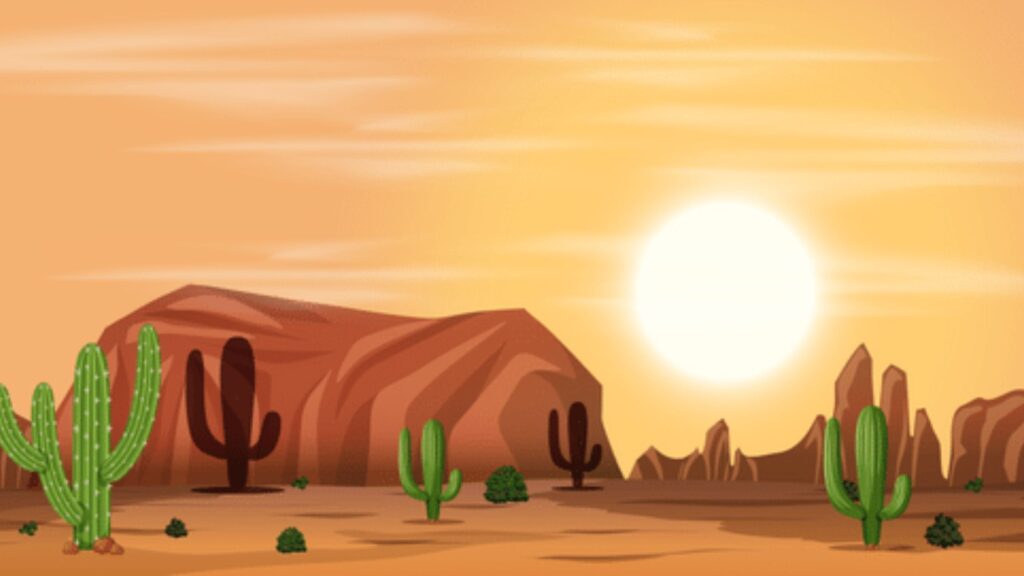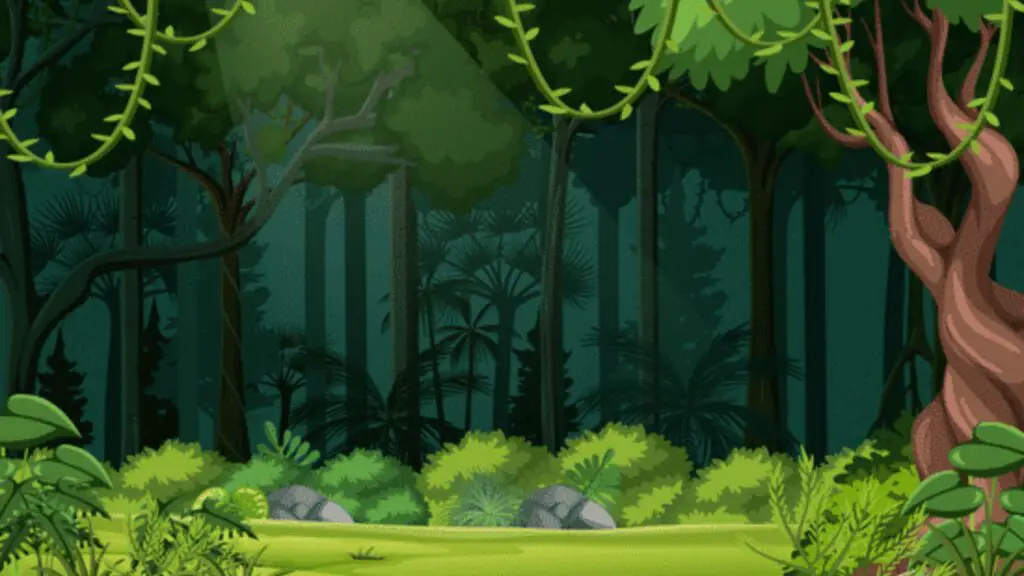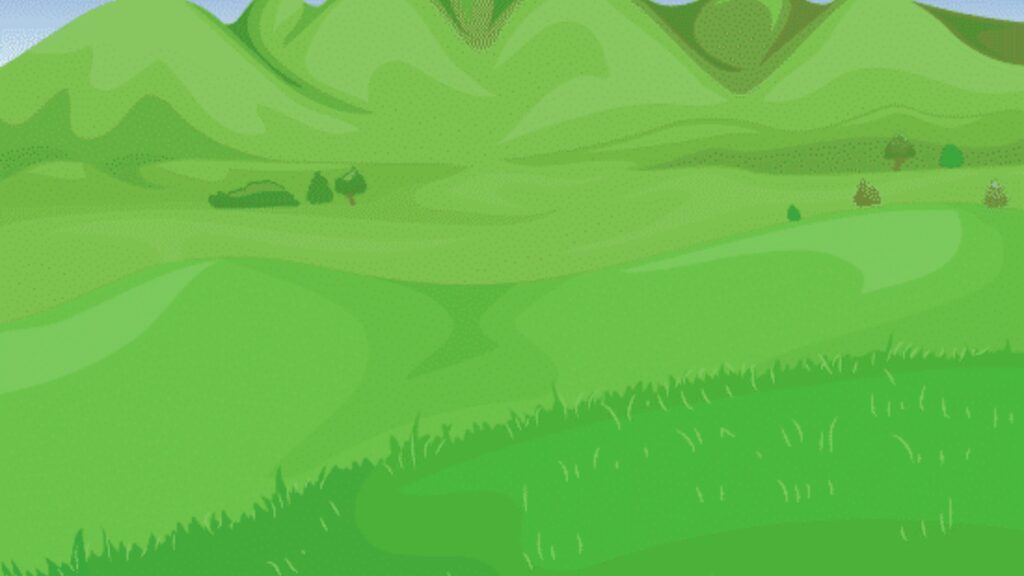Table of Contents
Definition of Terrestrial Ecosystem
- An ecosystem is a collection of interconnected groups of both living and nonliving organisms. Terrestrial ecosystems are those that can only be found on land, despite the fact that many ecosystems exist both on land and in the world’s oceans.
- The biotic, or live organisms, of an ecosystem consist of numerous plant and animal species.
- Abiotic, or non-living, components of an ecosystem include diverse landforms and climate.
- Examples include tundra, taiga, temperate deciduous forest, tropical rain forest, grassland, deserts.
- Terrestrial ecosystems are distinguished from aquatic ecosystems by the predominance of soil over water at the surface and by the expansion of plants above this soil/water surface.
- There is a wide range of water availability in terrestrial ecosystems, including in some situations water scarcity, but water is rarely a limiting factor for organisms in aquatic habitats.
- Because water acts as a temperature buffer, terrestrial ecosystems in similar temperatures typically endure more diurnal and seasonal temperature changes than aquatic habitats.
- The conservation-restoration and sustainable use of terrestrial ecosystems are essential to achieving Sustainable Development Goal 15, which is focused on terrestrial ecosystems.
- It consists of a community of species and their habitats that inhabit continents and islands.
- In terrestrial communities, there are both compositional and geographical distinctions. The terrestrial ecosystem encompasses 28 percent of the Earth’s surface, or 144,150,000,000 km2. Prior to around 425 million years ago, the first terrestrial ecosystem emerged.
Features of Terrestrial Ecosystem
The terrestrial ecosystem has the following characteristics:
- Terrestrial ecology refers to the environment that exclusively exists on land, as terrestrial means land.
- These ecosystems consist of various groups of species that live and interact.
- The marine environment is distinct from the terrestrial ecosystem because it consists of both water and the ground beneath the ocean. In contrast, terrestrial ecosystem is only concerned with land.
- There are four distinct terrestrial ecosystem types.
Types Of Terrestrial Ecosystems
Different types of terrestrial ecosystems are widely dispersed throughout the geological zones. They consist of:
1. Desert Ecosystem
- Deserts are arid, hot, low-rainfall regions with strong winds and a lack of water.
- They portray tremendous temperatures. About one-seventh of the earth’s surface is covered by deserts.
- Consumers And Producers: Cacti, acacia, euphorbia, and prickly pears are frequent desert vegetation.
- Shrews, foxes, woodrats, rabbits, camels, and goats are among the most common herbivores and carnivores found in the desert.
- Additionally, reptiles and burrowing rodent insects are major consumers.
- Desert plants have adapted to the extreme heat and arid climate.
- These plants adopt the following ways to conserve water:
- They are dominated by bushes.
- There are missing or diminished leaves.
- Leaves and stems with a high water-retention capacity.
- Some plant stems contain chlorophyll for photosynthesis.
- An extensive root system that is well-developed.
- The animals’ physical and behavioural adaptations to the desert habitat are as follows:
- They are fast runners.
- They prefer to be nocturnal to avoid the intense heat of the sun throughout the day.
- By producing concentrated pee, they are able to conserve water.
- Animals and birds typically have long legs to keep their bodies away from the earth’s heat.
- Lizards mostly consume insects and can survive without water for several days.
- Herbivorous animals acquire sufficient hydration from the seeds they swallow.
- Camel is referred to as the desert ship due to its ability to traverse vast distances for several days without consuming water.
- Based on climate and temperature, deserts are categorised into two categories: hot deserts and cold deserts.
- The Sahara Desert is an example of a hot desert, characterised by high temperatures, minimal precipitation, and complex plant and animal life.
- Ladakh, a frigid desert on the eastern border of Jammu and Kashmir close to the Great Himalayas, is an illustration.

2. Forest Ecosystem
- These habitats include several forest types, including temperate deciduous forests, plantation forests, and tropical rainforests.
- They provide a natural habitat for a broad variety of living organisms and have the highest species diversity.
- Forests cover around 30 to 35 million square kilometres of the earth’s surface and are home to more than 300 million species of plants and animals.

Types of forest Ecosystem
According to climate and tree type, they are divided into the following categories:
- Tropical rain forests
- Temperate deciduous forests
- Boreal or north coniferous forests
a. Tropical Rain Forests
- These can be found on both sides of the equator in areas with abundant precipitation.
- These forests are located along the western coast of India, as well as in Southeast Asia, Africa, and South America.
- The biotic and abiotic components of an ecosystem explain the structure, biological connections, distribution, and environmental characteristics of the ecosystem.
- Biotic components are the living components of an ecosystem. Examples of biotic factors are plants, animals, fungus, and bacteria.
- The biotic components of Tropical Rain Forests exhibit a rich diversity of species.
- The 200-square-kilometer-large Brazilian tropical rain woods are home to more than 300 species of trees.
- Trees can attain heights between 50 and 60 metres. In these woodlands, epiphytes such as vines, creepers, woody creepers, and orchids thrive.
- These forests are teeming with tree-dwelling heterotrophs such as monkeys, flying squirrels, snails, centipedes, and millipedes, as well as numerous insect species.
- Abiotic components are the non-living components of an ecosystem. An ecosystem’s abiotic components are air, light, soil, nutrients, temperature, and precipitation.
- Tropical rainforests are located in areas with high temperatures, high humidity, and more than 200 cm of annual precipitation. The soil is plentiful in humus.
b. Temperate Deciduous Forests
- They usually live in the northwest, central, and eastern parts of Europe, the eastern parts of North America, north China, Korea, Japan, and far eastern Russia, as well as Australia.
- Leaves fall off deciduous forest trees in the fall, and in the spring, new leaves grow.
- These forests grow in places with average weather, like temperatures between 10 and 20 degrees Celsius, a six-month winter, and 75 to 150 centimetres of rain a year.
- Their soils are brown and full of nutrients.
- Consumers And Producers: Oak, beech, heath, chestnut, birch, and pine are all common trees. These forests also have different levels, with young trees, bushes, and tall herbs in the understory.
- Some of the most well-known herbivores are deer, bison, and rats. Rodents play an important role in these woods. Their main food sources are seeds, fruits, and tree leaves.
- In these woods, you can find omnivores like black bears, raccoons, wild cats, wolves, foxes, and skunks.
- Hibernation, or sleeping through the winter, is something that many animals in these woods do.
- The invertebrate fauna includes green flies, aphids, some moths, and butterflies.
c. Boreal or North Coniferous Forests
- “Taiga” is also used to talk about forests with conifers.
- Below the northern tundra, they make a strip that goes all the way across North America and North Eurasia.
- Since there is no land at this latitude, there is nothing in the southern hemisphere that is like these forests.
- The weather is cold, and the average annual temperature is below 0 degrees Celsius. The winters are long and harsh.
- The soil is acidic and lacks nutrients.
- Producers: Coniferous forests are always green, can handle drought, and have woody plants.
- Conifers (gymnosperms) are trees like spruce, fir, and pine that have cones with naked seeds inside.
- In these forests, you can find red squirrels, deer, goats, mules, moose, and other animals.
- The wolves, lynxes, and bears that eat them are carnivores.
- Here, you can also find crossbills, thrushes, warblers, flycatchers, robins, sparrows, and other common birds.
3. Grasslands
- Grasslands are places that are mostly made up of grass. They make up the most common kind of plant. They live on about 20% of the land on the surface of the Earth.
- If there isn’t enough rain to grow trees, grasslands can grow in both tropical and temperate climates. It has different names in different parts of the world.
- Grasslands can be found in places with clear seasons, such as places that are hot and dry or warm and wet.
- Tropical grasslands are called savannas by most people. They live in eastern Africa, South America, Australia, and India.
- Savannas are grasslands with a few medium-sized trees scattered around.
- Who Makes And Who Buys: The tropical grasslands are mostly made up of grasses, and there are prickly, drought-resistant trees all over.
- Grasslands are where badgers, foxes, ass, zebras, and antelope eat. This is important for the dairy and leather industries.
- In grasslands, there are a lot of rodents, reptiles, and insects.
- You can also divide grasslands into the following groups:
- Tropical Grasslands
- Temperate Grasslands

4. Tundra
- The Finnish word “tunturi,” which means “treeless plain,” is where the word “tundra” comes from.
- The word “tundra” refers to areas in the arctic that are windy, covered in snow, and have no trees. These areas have harsh conditions similar to those in deserts.
- Unlike deserts, this area has frozen soil all year long. When the snow melts in the summer, it forms shallow ponds.
- In the north, between the Arctic Ocean and the polar ice caps, and in the south, between the coniferous woods, you can find the tundra biome.
- The weather in this area is characterised by a long winter and a short summer (2months only).
- The ground is always covered with snow. The frozen ground is good for plant growth only during the summer.
- This leads to the growth of lichens and a few plants with small, colourful flowers.
5. Taiga Ecosystem
- The taiga is another type of forest environment. It is also called the northern coniferous forest or the boreal forest.
- It covers a large area of land in the northern part of the world. It only has a few species, so it is not very diverse.
- Habitats in the Taiga have short growing seasons, cold weather, and poor soil. The taiga is a subarctic forest that lives in a cold climate.
- The subarctic zone is a bit south of the Arctic Circle in the Northern Hemisphere.
- The tundra is to the north, and temperate forests are to the south. This is where the taiga is.
- In this land setting, the days are longer in the summer and shorter in the winter.
- In the taiga, you can find lynx, moose, wolves, bears, and rodents that dig holes.
- Animals like foxes and bears that live in the Taiga and are hunted for their skin and fur have always been a threat to traditional hunters.
- People have used their warm fur and tough skin, which has been turned into leather, for thousands of years to stay alive in bad weather.
- Permafrost is a layer of soil that stays frozen all the time. It is often seen under the taiga. In other places, a layer of bedrock is just below the soil.
- Ecosystems in the taiga are in danger because of what people do and how the climate is changing.
- In many ways, climate change is a threat to taigas. Because the climate is getting warmer, some of the permafrost is starting to melt.
- Since this water has nowhere to go, more of the taiga has been taken over by muskegs. Animals’ homes are also affected by changes in the climate. Native species are pushed out, and non-native species are attracted to the area.
Impact of Terrestrial Ecosystems on Environment
- Having little water (compared to aquatic environments) and how important water is as a limiting factor because of this. Many of the water systems that keep ecosystems alive and feed a growing number of people are in trouble. Rivers, lakes, and aquifers are drying up or getting so dirty that they can’t be used. More than half of the world’s wetlands no longer exist.
- There are more day-to-day and seasonal changes in temperature. As the climate changes and species are wiped out, it’s likely that some ecosystem functions will change. This could lead to more soil degradation, changes in agricultural production, and a drop in the quality of water given to people.
Sustainable Management of Terrestrial Ecosystem
- Terrestrial ecosystems support most of our progress, from getting raw materials to making food.
- Forests cover 30% of the Earth’s surface, give many land animals oxygen and a place to live, and take in a lot of carbon.
- Between 2010 and 2015, the amount of forested land that was lost each year was less than half of what it was in 1990. However, 12 million hectares of forest are still lost every year, and biodiversity is still falling at alarming rates.
- With the technology we have now, a growing population will need more fields to grow crops, but this shouldn’t come at the expense of forests, especially since climate change is making desertification worse.
- Forest ecosystems are important for water conservation and for finding new medicines and active ingredients that haven’t been found yet.
Terrestrial Habitat Plants
A terrestrial habitat plant is one that grows on or from the ground. Most of the time, these kinds of plants are put into groups based on how they look. –
- Mesophyte: It is a type of plant that can grow with just enough water. It also kept the root, shoot, and vascular structure of a healthy plant.
- Xerophyte: Most xerophytes grow in deserts, where the climate is dry and the environment is hot. They kept water in the thick, fleshy part of their stems. It has small leaves that help slow down the process of water loss.
Terrestrial Habitat Animals
The animals that usually live on land are called terrestrial animals. These animals usually get certain traits from where they live in the wild. These traits are:
- Desert Animals: These animals, like camels and rodents, have thick skin and an organ in their bodies that stores water.
- Arboreal Animals: Arboreal animals have curved bodies and strong chests that help them climb and move between branches. Squirrels and chameleons are examples of arboreal animals.
- Fossorial Animals: These animals live in underground burrows. Their front legs are short, and their heads are shaped like a stout stick. Rats and rabbits are examples of animals that dig holes.
- Cursory Animals: Most of the time, these animals live or move on hard, open ground and have strong legs. For example, like horses and deer.
- Aerial Animals: The forelimbs of these animals are usually streamlined and are usually made into wings.
References
- https://education.nationalgeographic.org/resource/resource-library-terrestrial-ecosystem
- https://en.wikipedia.org/wiki/Terrestrial_ecosystem
- https://www.vedantu.com/biology/terrestrial-ecosystem
- https://study.com/academy/lesson/what-is-a-terrestrial-ecosystem-definition-examples-types.html
- https://www.sciencedirect.com/topics/earth-and-planetary-sciences/terrestrial-ecosystem
- https://collegedunia.com/exams/terrestrial-ecosystem-biology-articleid-1706
- https://www.sciencedirect.com/science/article/pii/B0122268652002698
- https://collegedunia.com/exams/terrestrial-ecosystem-biology-articleid-1706
- https://sciencing.com/major-types-terrestrial-ecosystems-8248888.html
- https://prepp.in/news/e-492-terrestrial-ecosystem-environment-notes
